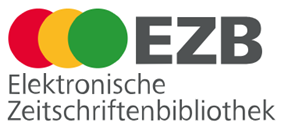Effects of Medium Constituents on Growth and Canthinone Accumulation in Cell Suspension Cultures of Eurycoma longifolia Jack
Abstract
The effect of various macronutrients, micronutrients and sucrose on growth and canthinone alkaloid production in cell suspension cultures of Pasak Bumi (Eurycoma longifolia Jack) was investigated. The optimum macronutrients and micronutrients content for the high alkaloid production of E. longifolia Jack was different to that found in the Murashige and Skoog (MS) medium. The highest amount of alkaloids, 9-hydroxycanthin-6-one and 9-methoxycanthin-6-one, could be obtained from E. longifolia Jack cells cultured in modified MS liquid medium that containing macronutrients: 21.50 mM NH4NO3, 14.25 mM KNO3, 7.50 mM CaCl2•2H2O, 2.50 mM MgSO4•7H2O, 1.45 mM KH2PO4, while content of micronutrients was 0.233 mM FeNa-EDTA, 0.215 mM MnSO4•4H2O and without CuSO4•5H2O. Increased sucrose concentration to 4.00% (w/v) in modified MS liquid medium could increase total of two-alkaloid. The modification of macronutrients and micronutrients concentration based the optimum production of biomass was obtained MSBs medium that producing high biomass but also increasing the production of 9-hydroxycanthin-6-one. The modification of macronutrients or macronutrients and micronutrients based the optimum total of two-alkaloid was obtained MSC and MSD medium that producing low fresh weight but producing the high 9-hydroxycanthin-6-one.Key words: Pasak Bumi, 9-hydroxycanthin-6-one, 9-methoxycanthin-6-one, macronutrients, micronutrients, sucrose
Downloads
HAYATI J Biosci is an open access journal and the article's license is CC-BY-NC. This license lets others distribute, remix, tweak, and build upon author's work, as long as they credit the original creation. Authors retain copyright and grant the journal/publisher non exclusive publishing rights with the work simultaneously licensed under a https://creativecommons.org/


















.png) IPB University
IPB University Department of Biology
Department of Biology The Indonesian Biological Society
The Indonesian Biological Society 

